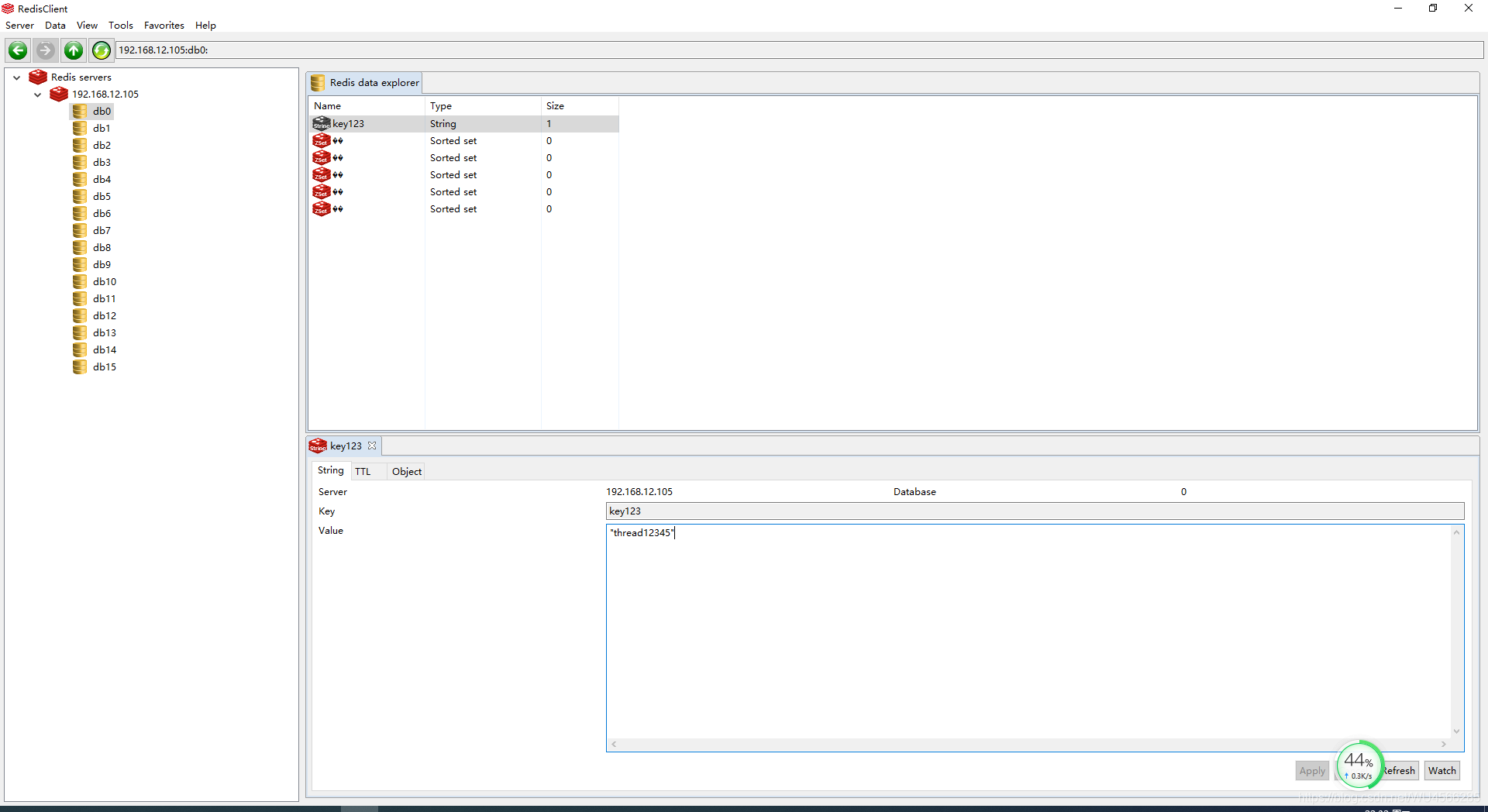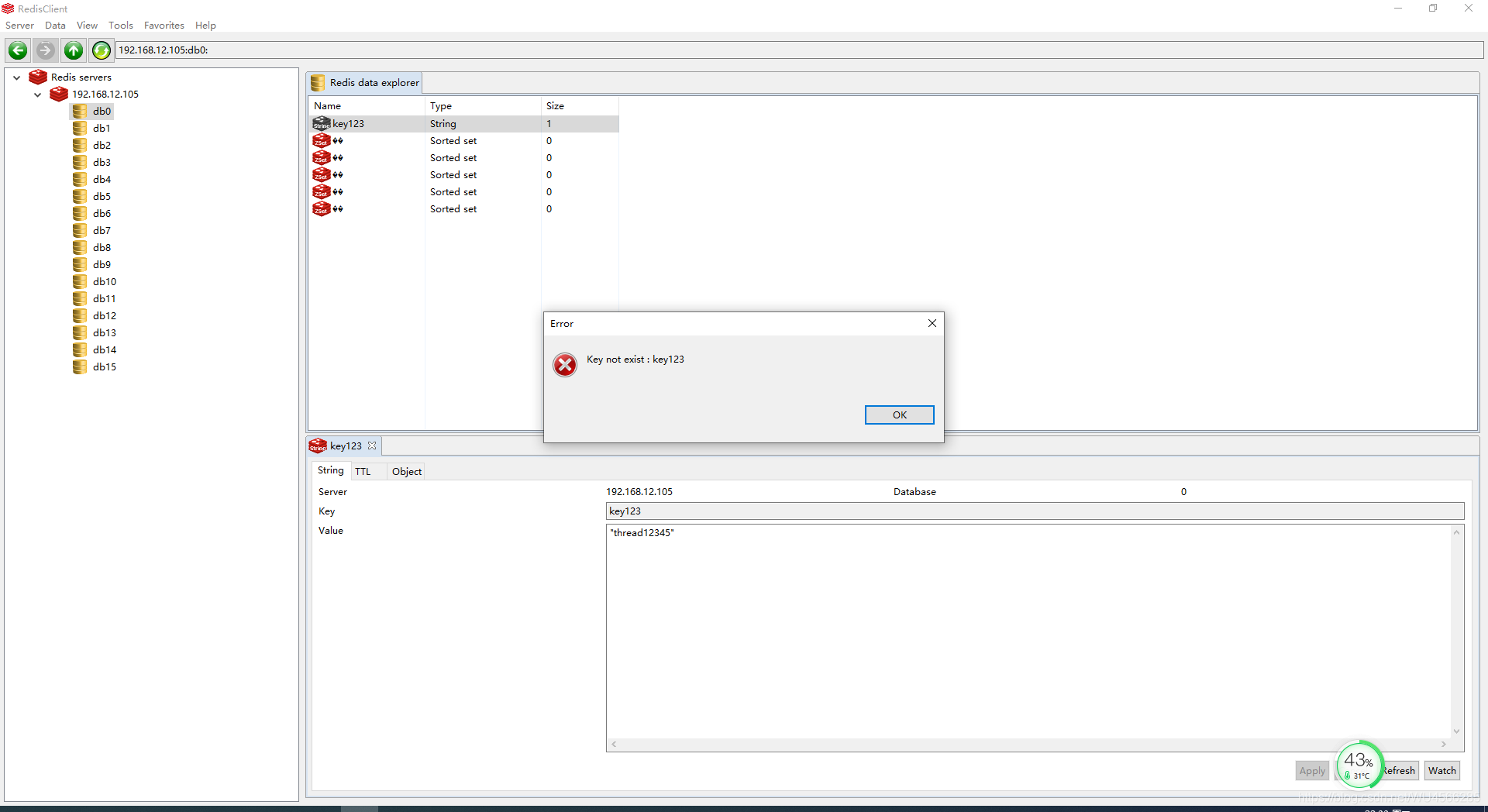Redis实现分布式锁 基于Redis实现分布式锁的方法(lua脚本版)
总有人想害朕 人气:0想了解基于Redis实现分布式锁的方法(lua脚本版)的相关内容吗,总有人想害朕在本文为您仔细讲解Redis实现分布式锁的相关知识和一些Code实例,欢迎阅读和指正,我们先划重点:Redis实现分布式锁,Redis,lua脚本分布式锁,下面大家一起来学习吧。
1、前言
在Java中,我们通过锁来避免由于竞争而造成的数据不一致问题。通常我们使用synchronized 、Lock来实现。但是Java中的锁只能保证在同一个JVM进程内中可用,在跨JVM进程,例如分布式系统上则不可靠了。
2、分布式锁
分布式锁,是一种思想,它的实现方式有很多,如基于数据库实现、基于缓存(Redis等)实现、基于Zookeeper实现等等。为了确保分布式锁可用,我们至少要确保锁的实现同时满足以下四个条件
- 互斥性:在任意时刻,只有一个客户端能持有锁。
- 不会发生死锁:即使客户端在持有锁的期间崩溃而没有主动解锁,也能保证后续其他客户端能加锁。
- 具有容错性:只要大部分的Redis节点正常运行,客户端就可以加锁和解锁。
- 解铃还须系铃人:加锁和解锁必须是同一个客户端,客户端自己不能把别人加的锁给解了。
3、基于Redis实现分布式锁
以下代码实现了基于redis中间件的分布式锁。加锁的过程中为了保障setnx(设置KEY)和expire(设置超时时间)尽可能在一个事务中,使用到了lua脚本的方式,将需要完成的指令一并提交到redis中;
3.1、RedisConfig.java
package com.demo.configuration;
import org.springframework.context.annotation.Bean;
import org.springframework.context.annotation.Configuration;
import org.springframework.data.redis.connection.RedisConnectionFactory;
import org.springframework.data.redis.core.RedisTemplate;
import org.springframework.data.redis.serializer.GenericJackson2JsonRedisSerializer;
import org.springframework.data.redis.serializer.StringRedisSerializer;
@Configuration
public class RedisConfig {
@Bean
public RedisTemplate<String, Object> redisTemplate(RedisConnectionFactory factory) {
RedisTemplate<String, Object> template = new RedisTemplate<>();
template.setConnectionFactory(factory);
// key采用String的序列化方式
template.setKeySerializer(new StringRedisSerializer());
// value序列化方式采用jackson
template.setValueSerializer(new GenericJackson2JsonRedisSerializer());
template.afterPropertiesSet();
return template;
}
}
3.2、RedisLockController.java
package com.demo.controller;
import org.springframework.beans.factory.annotation.Autowired;
import org.springframework.core.io.ClassPathResource;
import org.springframework.data.redis.core.RedisTemplate;
import org.springframework.data.redis.core.script.DefaultRedisScript;
import org.springframework.scripting.support.ResourceScriptSource;
import org.springframework.web.bind.annotation.PathVariable;
import org.springframework.web.bind.annotation.RequestMapping;
import org.springframework.web.bind.annotation.RestController;
import java.util.Arrays;
@RestController
@RequestMapping("/redis")
public class RedisLockController {
@Autowired
private RedisTemplate<String, Object> redisTemplate;
@RequestMapping(value = "/lock/{key}/{uid}/{expire}")
public Long lock(@PathVariable("key") String key, @PathVariable("uid") String uid, @PathVariable("expire") Integer expire) {
Long result = null;
try {
//调用lua脚本并执行
DefaultRedisScript<Long> redisScript = new DefaultRedisScript<>();
redisScript.setResultType(Long.class);//返回类型是Long
//lua文件存放在resources目录下的redis文件夹内
redisScript.setScriptSource(new ResourceScriptSource(new ClassPathResource("redis/redis_lock.lua")));
result = redisTemplate.execute(redisScript, Arrays.asList(key), uid, expire);
System.out.println("lock==" + result);
} catch (Exception e) {
e.printStackTrace();
}
return result;
}
@RequestMapping(value = "/unlock/{key}/{uid}")
public Long unlock(@PathVariable("key") String key, @PathVariable("uid") String uid) {
Long result = null;
try {
//调用lua脚本并执行
DefaultRedisScript<Long> redisScript = new DefaultRedisScript<>();
redisScript.setResultType(Long.class);//返回类型是Long
//lua文件存放在resources目录下的redis文件夹内
redisScript.setScriptSource(new ResourceScriptSource(new ClassPathResource("redis/redis_unlock.lua")));
result = redisTemplate.execute(redisScript, Arrays.asList(key), uid);
System.out.println("unlock==" + result);
} catch (Exception e) {
e.printStackTrace();
}
return result;
}
}
3.3、redis_lock.lua
if redis.call('setnx',KEYS[1],ARGV[1]) == 1 then
return redis.call('expire',KEYS[1],ARGV[2])
else
return 0
end
3.4、redis_unlock.lua
if redis.call("exists",KEYS[1]) == 0 then
return 1
end
if redis.call('get',KEYS[1]) == ARGV[1] then
return redis.call('del',KEYS[1])
else
return 0
end
4、测试效果
key123为key,thread12345为value标识锁的主人,300为该锁的超时时间
加锁:锁主人为thread12345
http://127.0.0.1:8080/redis/lock/key123/thread12345/300
解锁:解锁人为thread123456
http://127.0.0.1:8080/redis/unlock/key123/thread123456
解锁:解锁人为thread12345
http://127.0.0.1:8080/redis/unlock/key123/thread12345
4.1、加锁,其他人解锁


thread12345加的锁,thread123456是解不了的,只有等thread12345自己解锁或者锁的超时时间过期
4.2、加锁,自己解锁



thread12345加的锁,thread12345自己随时可以解锁,也可以等锁的超时时间过期
5、总结
- 使用Redis锁,会有业务未执行完,锁过期的问题,也就是锁不具有可重入性的特点。
- 使用Redis锁,在尝试获取锁的时候,是非阻塞的,不满足在一定期限内不断尝试获取锁的场景。
- 以上两点,都可以采用Redisson锁解决。
加载全部内容